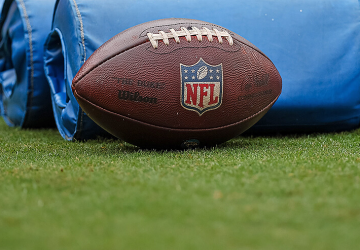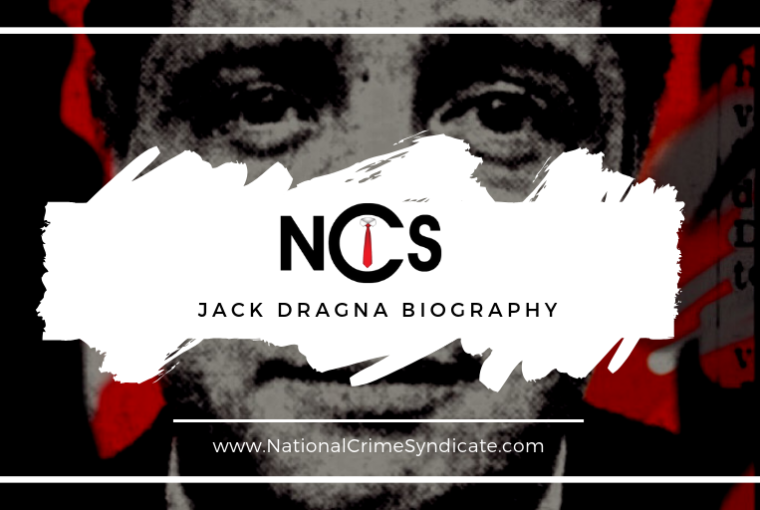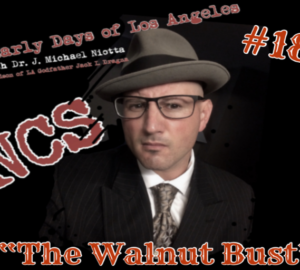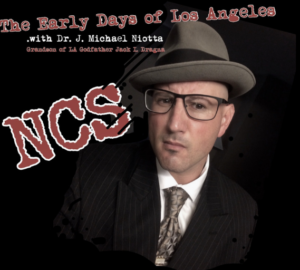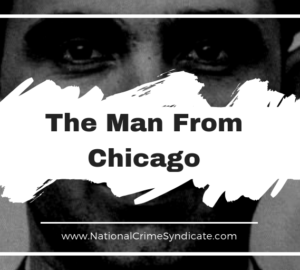14 minutes
Installment 15: Jack Dragna Biography
Jack Ignatius Dragna
Born: Ignacio Dragna, Corleone, Sicily, April 18, 1891
Died: Hollywood, CA, February 23, 1956
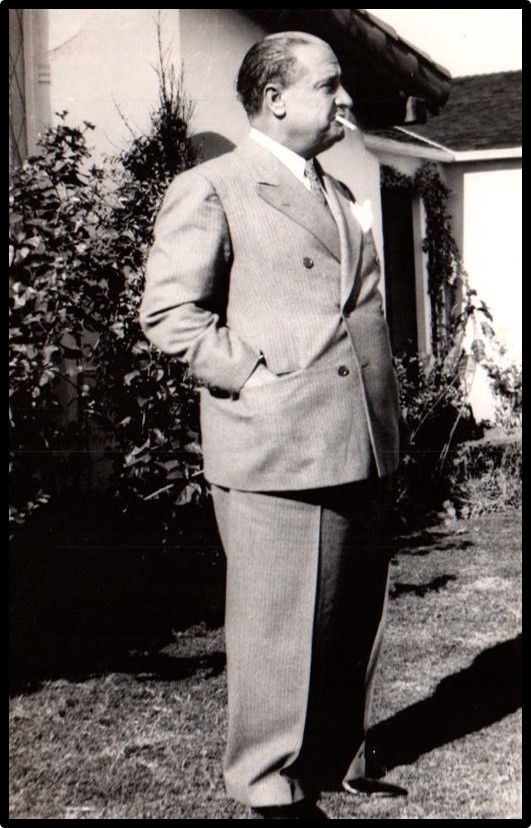
Taken from Niotta’s book, The Los Angeles Sugar Ring.
Jack Dragna was an early influential Los Angeles figure who rose to prominence through bootlegging, political, and gambling endeavors. During the early part of prohibition, he helped quell the bloody vendetta between LA’s warring Sicilian clans and solidified this power under one banner. Heading up the “Organization” out West for a quarter century—from 1931 until his death of natural causes in February of 1956—he would serve as their most powerful leader. Although sources suggest the West Coast was too insignificant to be included in the formation of the New York Commission or to attend its meetings, federal files and the account of high-ranking la cosa nostra member, Nicola Gentile, refute these claims. In his book, Vita Di Capomafia (1963), Gentile divulged “The first to go to the restaurant, which had been chosen by Maranzano, were the representatives of California and the far West, a dozen in all” (translated from Italian). Not only did they travel the greatest distance to take part, they were the first to arrive.
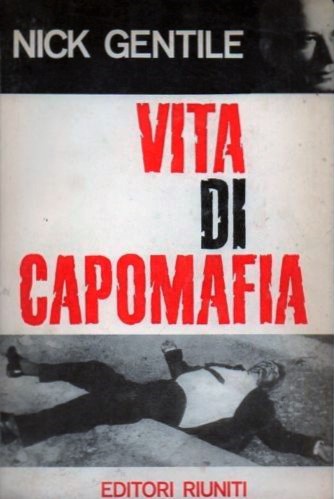
During the violent Castellemmarese War of the early 1930’s, Jack Dragna sided with the New York Corleonese and rallied with Salvatore Maranzano against Giuseppe “the Boss” Masseria. Following the war, and with the blessing of the newly formed syndicate, Jack Dragna seized control of the LA Brugad from Joe “strong man” Ardizzone. Federal files highlight that Jack Dragna attended higher echelon meetings back East during the thirties and on, and official travel documents show that he entertained distinguished guests from all over the country by as early as 1932. An airline manifest for a flight from Agua Caliente, Mexico to San Diego, California in the summer of ‘32, lists the following passengers: Jack Dragna and his local associates Jimmy Costa and Jack Russell (Russell is an alias for Johnny Roselli); Cleveland Boss Frank Milano; New York Boss Vincent Mangano; Salvatore Maranzano’s former Under Boss, Angelo Caruso, who’d since become second to Joe Bonanno; a New York based associate of Meyer Lansky and Ben Siegel, named Phil Kovelick; and at least one other potential big player traveling under an assumed name—L. W. Smith of Chicago.
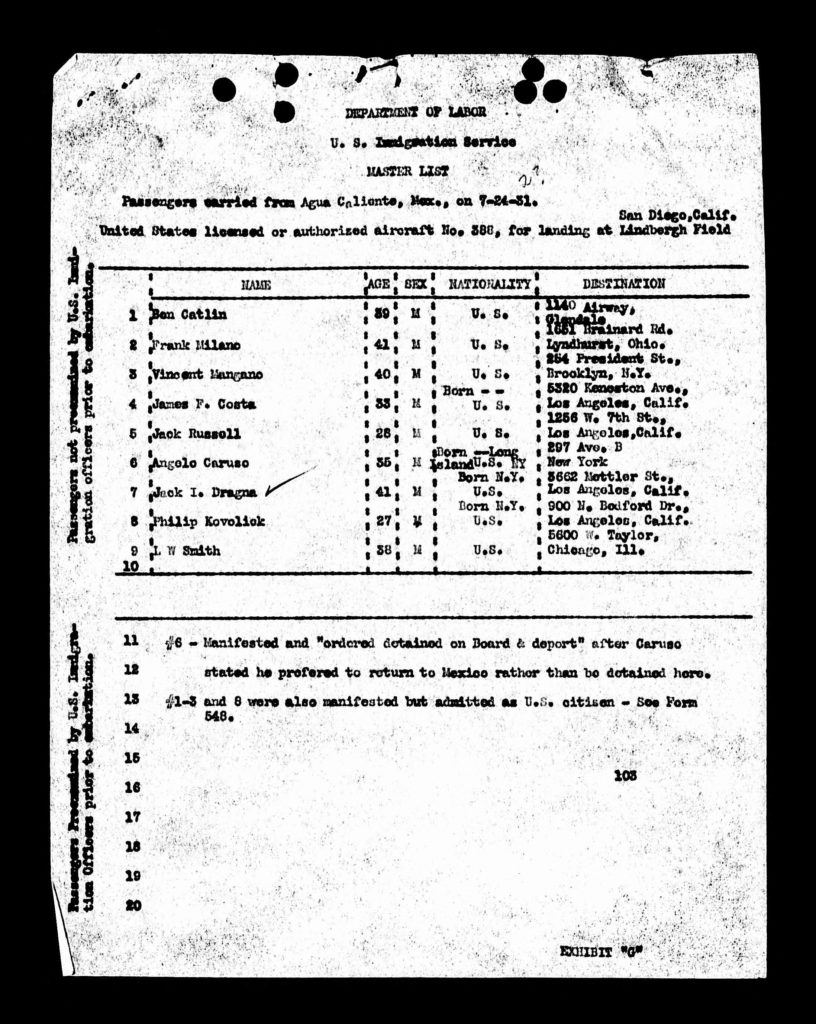
Although pop culture outlets are quick to spout that Jack Dragna never got a foothold in Las Vegas—which is fairly true—in a manner he actually contributed to the formation of Sin City; Jack Dragna was largely responsible for purging the founding fathers of modern day Las Vegas from their earlier turf of Los Angeles. Guy McAfee, Tutor Scherer, Milton “Farmer” Page, Chuck Addison, and Eddie Nealis—a group commonly referred to as The Combination—were all well-established LA gamblers and racketeers before ever landing in Nevada. During prohibition they had the city’s rackets fairly well sewn up, and even put their own man in office—Mayor George Cryer. The Combination was far too comfortable and rooted in SoCal vice to just give up all they’d built, and yet, when Guy McAfee arrived in Nevada abruptly in 1939, he was quick to tell reporters he hadn’t been run out of Los Angeles. The statement was likely made in order to save face. Here’s another side of the story.
The Italians had long been a stone in the shoe of the Combination’s bootlegging enterprise but became a greater threat once Joe Ardizzone and Jack Dragna entered politics, forming the influential Italian Welfare League. And after Jack Dragna took over, matters got even worse for Guy McAfee and his associates. Under Dragna, the Organization moved in on the rackets earlier leaders shied from, namely gambling. It wasn’t long before the Italians “were cut in”—as the federal files state. The Combination continued to operate in LA during the remainder of the depression-ridden thirties, predominately in slot machines and prostitution, but now they were forced to pay, forking over a tithe to the Italians. And what the Combination had in Mayor George Cryer, the Italians soon mirrored. Leveraging the League’s pull over the city’s large Italian workforce, they influenced the vote. Come 1933, the Organization had their own man in a seat of power—Mayor Franklin Shaw. The Combination no longer ran the show.
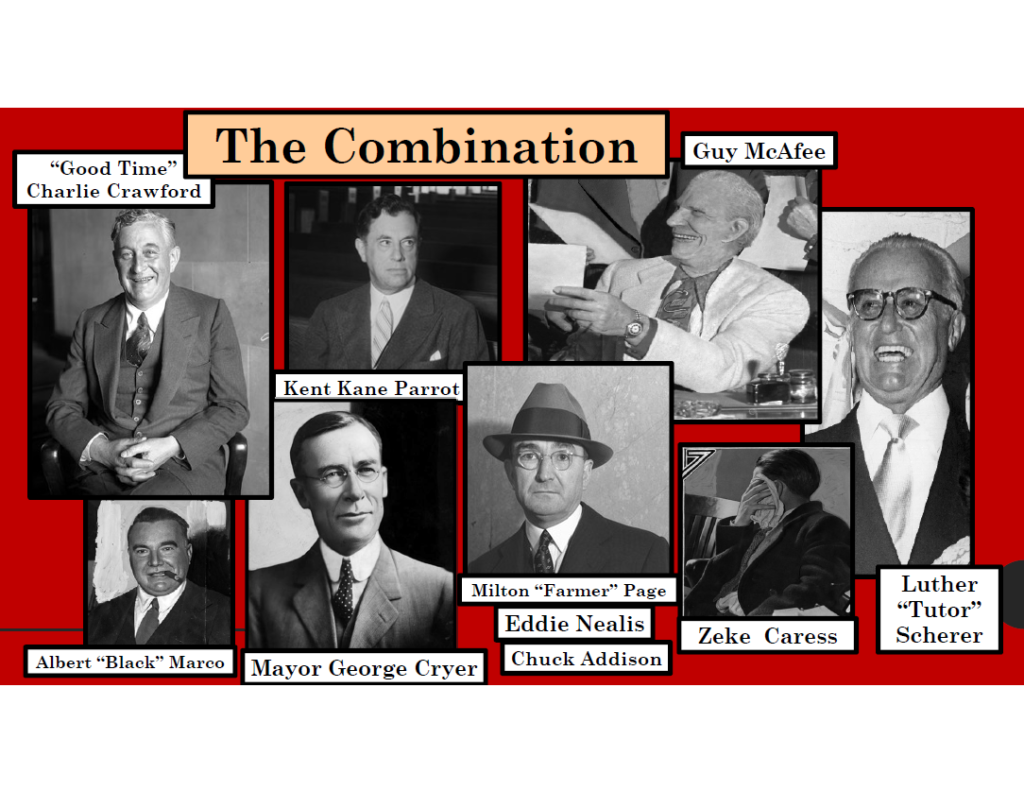
If the Italians hadn’t entered politics or muscled in on the Combination’s gambling rackets, Guy McAfee and his associates may have remained in the City of Angels. At that time, there was little allure to Southern Nevada. Had they not left LA, who knows what Las Vegas would be today. But the Italians can’t take all the credit. Several other forces certainly motivated this decision to flee California. This included the crusading efforts of the new mayor, Fletcher Bowron, and the overzealous Governor Earl Warren. And we can’t forget the syndicate’s man, Ben Siegel. That being said, by far, the most aggressive and enduring assault on the Combination came by way of the Organization. Through all-out warfare Jack Dragna carved a piece for the Italians; what they took belonged to the Combination. A description of this exchange is offered in the federal files—in their assault, the Dragna brothers proved “ambitious” and “utterly ruthless.”
The Combination departed Los Angeles entirely by 1939 and pioneered what is now referred to as the Fremont District, having a hand in the Frontier Club, El Rancho, Pioneer Club, the Golden Nugget, and a variety of other gambling establishments. Guy McAfee is even credited with branding Las Vegas Boulevard, “the Strip,” naming it after Hollywood’s own Sunset Strip. Who would have ever thought the guys who couldn’t hack it in LA would make such a big splash in South Nevada?
Jack Dragna and Benjamin “Bugsy” Siegel are often portrayed as bitter enemies, with Dragna typically pitted in a subservient role. Some theories even stipulate that Salvatore “Lucky” Luciano delivered an ultimatum to Dragna, telling him to stay out of Siegel’s way. There is little if any truth to these yarns. Getting out of New York was all about survival. Ben Siegel left to avoid Special Prosecutor Tom Dewey. Because Dewey had just put away Luciano on a trumped up charge of compulsory prostitution, Siegel’s pals, Lucky and Lansky, no doubt urged him to leave the Big Apple. Siegel’s visits out West a couple years earlier are likely responsible for his decision to relocate to Los Angeles—he’d fallen in love with Hollywood. Although it makes for a fantastic plot to a noir story, it is doubtful the move had anything to do with expanding the interests of Meyer Lansky or Lucky Luciano. Bill Bonanno addressed the topic in his book, The Last Testament of Bill Bonanno. The son of Bonanno family Boss, Joe Bonanno, explained “The truth is that it wasn’t the Commission who sent Bugsy Siegel to California. The Commission did not have the authority to make that decision.” The purpose of the Commission—which Bonanno contends pop culture and write writers have completely fabricated—was merely to keep peace among the various families. In line with this, sending a Jew to invade a Sicilian’s territory and take over goes against the very premise of the syndicate and the Commission. Jews and Italians were now working together—which is exactly what came to pass.
Fiction about the Commission and about Ben Siegel’s move to Los Angeles in late 1936, no doubt take root in the efforts of crime journalists. Many of these newsmen who wrote about the mafia during the 50’s and 60’s became bestselling “true crime” authors. The mythology surrounding “Bugsy” was certainly strengthened by Burt Turkus’ syndicated column on organized crime; Turkus coined the popular phrase, “Murder Inc.” In a 1958 installment on Bugsy’s tenure out West, Turkus covered the relationship between Jack, Ben, and Mickey. The article institutes an inaccurate theme which has somehow managed to survive. Ignorant to the protocols of this society, Turkus mistakenly uses the word “lieutenants” to describe Dragna and Cohen. Although this has spurred the belief the two were on equal footing or stature, this was NOT what Turkus was suggesting. In fact, this installment is a complete turnaround from what is now considered an accurate account of the past. According to Turkus, Jack Dragna was Ben Siegel’s “most valuable asset” out West, while Mickey Cohen was a mere “small shot” going “for the sandwiches when the big-boys have their hotel room sessions.” Somewhere along the way, Hollywood and a bevy of crime writers managed to get this backward.
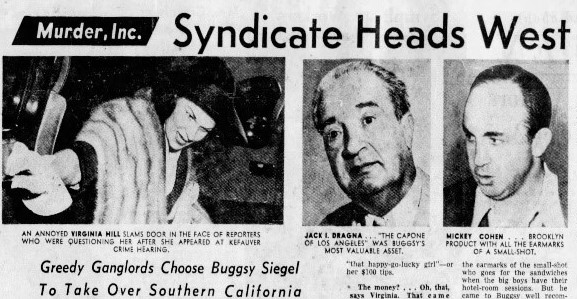
A key factor contributing to this shift is the common practice of using Mickey Cohen’s autobiography, In My Own Words (1975), as a primary resource. Unfortunately, most books that mention the early Los Angeles crime scene defer to Cohen’s side of the story. This should raise an immediate red flag. Be wary of anyone who writes their own story; the printed self is always more popular, powerful, feared, and successful than the flesh ever was. As Charles Bukowski put it, “I’m the hero of my own shit, baby.” In My Own Words reads like a new chapter from J. D. Salinger’s Catcher in the Rye—Cohen “Caulfield” rattles on and on about how he is backed by the syndicate and oversees everyone’s interests out West. When this tall tale is paired against the federal files though, it becomes exceedingly evident that what has been “divulged” is anything but true.
Mickey Cohen got his start lying to the press way back when he worked with newsmen from the LA Daily on a series of articles about his life story. As the feds less-than-delicately noted in Cohen’s federal files, the ruse he sold reporters failed to align with his arrest record. Agents portray another character altogether; a “braggart” who—in order to bolster his “reputation as a tough”—often took credit for crimes he didn’t commit. This included murder! Mickey Cohen crafts himself as a real cool gangster when describing how he—while unarmed—managed to out-gun bookie Maxie Shaman. In truth, Cohen had nothing to do with the killing. Hooky Rothman shot Shaman dead and the syndicate asked Cohen to take the fall.
Despite Mickey Cohen’s contentions and what has since become popular belief, Jack Dragna and Ben Siegel worked together on the racing wire. This industry catered to the large number of bookmakers taking off-track bets throughout the country. Without the wire, bookies couldn’t operate, which made it a very lucrative racket—one which greatly appealed to the national crime syndicate. After failing to muscle in on Continental Press—the country’s dominate racing news provider—Dragna and Siegel partnered with Meyer Lansky, the Chicago Outfit, and others to establish a competing corporation known as Trans-American. Out West, Jack Dragna and Ben Siegel took charge of the “boots on the ground” end of operations, with Dragna handling Los Angeles and Siegel tending to affairs in Las Vegas. Their investors back East contributed primarily by seeing to various expenses and managing the “juice” to public officials.
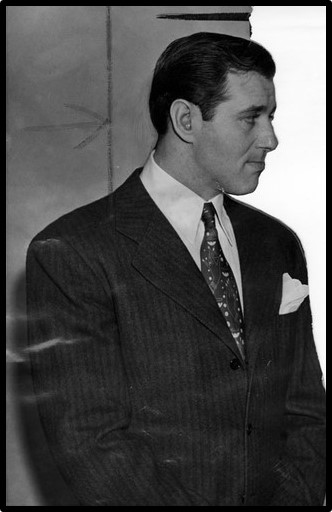
Mickey Cohen’s role during this syndicated partnership was one of mere muscle—he did the delegated dirty work. Cohen was tasked with persuading bookies to subscribe to the new service, and wasn’t noted for following orders well. In an effort to boost his own worth and involvement during this time period, Cohen attempts to sell a rivalry between Dragna and Siegel, and present himself as a much larger player in the scheme of things. In his book, he claims that “Benny Siegel’s knocking over Continental was kind of a slap in the face to Dragna and Roselli who thought they were running the West Coast.” Contrary to this contention, is a report from the Senate’s Special Committee. According to the committee, when Mickey Cohen and Joe Sica tore up the office of SoCal Continental Press head, Russell Brophy, this was not in opposition of Jack Dragna. In fact, the committee stipulated that the pair was “undoubtedly acting on behalf of Jack I. Dragna.” Their statement stemmed from the testimony of a Brophy employee named George Redston. Under oath, Redston relayed that prior to the assault, Jack Dragna personally met with Russell Brophy “and explained that he wanted Mickey Cohen and Joe Sica to distribute Continental’s racing sheets.” This detail—a detail which clearly demonstrates a working relationship between Dragna and Siegel—is conveniently left out of Cohen’s book.
Another vital piece of LA past left out of the Mickey Cohen autobiography centers around the level of damage he did. Cohen’s very public involvement in the Brenda Allen scandal led to “a grand jury investigation of police-protected vice” and the resignation of Police Chief Horall. It also put a knife in a bevy of longstanding under-the-table arrangements; arrangements that allowed the rackets to thrive in Southern California. Horall’s replacement, Chief William Worton, was a regular Boy Scout. Bent on change, he “made more than 200 transfers” in his first few months on the force. Although it had taken men like Jack Dragna a lot of time, effort, money, and political pull to put together a system that worked in the City of Angels, it didn’t take Mickey Cohen long to loudly knock it all down. After that, folks on both sides of the law wanted the little gambler dead. The rackets out West would suffer from then on out.
Following Ben Siegel’s murder in the summer of 1947, Mickey Cohen grew ambitious. For many, his loud public methods and bold moves were a very serious problem. As a result, during the final breaths of the 1940’s, a number of attempts were made on his life. The crime books convey it as a “war” between Dragna and Cohen for control of the city’s bookmakers, referring to the struggle as “The Battle of the Sunset Strip.” Countering this description, enemies trade blows during a war, and in this instance, all the bullets were flying in just one direction. Although Mickey Cohen did manage to survive a number of assassination attempts, ultimately the ordeal resulted in the death, disappearance, or desertion of the bulk of his small crew. Several of Cohen’s men even shook their head at bail, opting instead to remain in jail where they felt safer.
In February of 1950, shortly after the bombing of Mickey Cohen’s Brentwood mansion, several of Jack Dragna’s relatives, and an associate named Momo Adamo, were hauled in by authorities. The group wasn’t held very long though, as lawmen weren’t exactly sure who was to blame; there were just too many potential suspects. Intel even suggested hitters from Cleveland were coming West for that very purpose. Despite current accounts, which generally list Cohen’s lucky survival as an inability and embarrassment on the part of Jack Dragna, the newsmen of the day reported it from another angle. Cohen was the one being called out and humiliated by the press and by members of law enforcement. And they did it often. Articles referred to Mickey Cohen’s henchmen as the “7 Dwarfs” and even crowned him their queen, Snow White. But Mickey’s reign was just about over. Following a 1951 conviction over tax evasion, the crime syndicate transferred his bookmaking and union interests to Jack Dragna. If you could call it a war, then Dragna was certainly the victor.
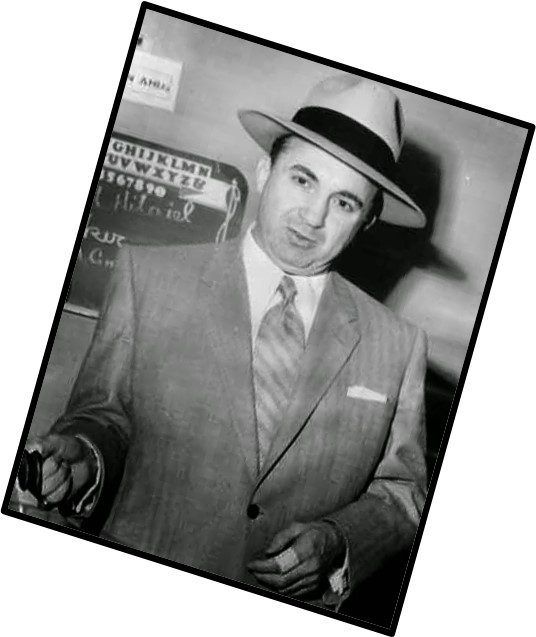
1950 is the year organized crime broke, and Senator Estes Kefauver is certainly deserving of the credit. His crime committee aggressively spotlighted the American gangster problem. During these televised proceedings, the commission made it known that Continental Press head, James Ragen, Sr., referred to Jack Dragna as the “Al Capone of Los Angeles.” They further alleged that he’d said it with his dying breath. The racing wire mogul was gunned down in Chicago in 1946. When it looked like he might recover, assailants found a way to poison him with mercury while laid up in a hospital bed. The Chicago Outfit rather than the LA Brugad is likely responsible. Reinforcing their contention about Jack Dragna, the committee also added that the “statement did not overestimate his importance.” From then on out, the dime-store title stuck, appearing every time Jack’s name hit the papers. Going further with their descriptions, Senator Estes Kefauver’s representatives publicly named Jack Dragna the “Mafia Boss” of the “Pacific Coast” and the “Kingpin of the Southern California Bookie Syndicate.” A lifetime of efforts to fly beneath the radar was now at an end.
The loss of his wife, Frances, to cancer in 1953, along with his own failing health, excessive deportation efforts, and an aggresive campaign of harassment led by the LA Gangster Squad and Captain Lynn White’s Intelligence Unit, severely hampered the lifestyle and gambling operations of Jack Dragna. These factors also kept him from getting better-established in Las Vegas. Brothers Jack and Tom Dragna owned various properties in the area and even had a residence built on the outskirts of the city; however, continued rousts and an order restricting Jack Dragna to LA County, kept their plan from seeing its true fruition. Despite these obstacles, the Dragnas were able to put together a “juice” arrangement with the Sheriff’s department which proved beneficial to the syndicate. Federal files also indicate that the Dragnas held a stake in the endeavors of casino owner, Benny Binion, and suggest that they may have owned a percentage in the Desert Inn with their good friend and business associate, Frank Milano, and his Cleveland partners.
An abrupt decline of the LA Brugad set in immediately following the passing of their longtime leader. Jack Dragna died in bed on February 23, 1956, passing from a heart attack while staying at Hollywood’s Saharan Hotel. Nearly three decades later, a completely opposing viewpoint sprouted. Around the late eighties, crime writers began spreading the rumor that Eastern gangsters had looked down upon Jack Dragna and referred to his organization by the derogatory title “Mickey Mouse Mafia.” Dispelling this farce, the phrase was first applied to the Los Angeles family by law enforcement. LAPD Chief Daryl Gates used it in a statement he made to reporters in late 1984. He was referencing the Organization under the direction of its current leader, Peter J. Milano. How exactly this morphed in order to relate to Jack Dragna remains unknown. What is not a mystery; however, is the national climate for organized crime during this period. Around the time Chief Gates’ words went “viral,” criminal families throughout the country were suffering from similar issues with law enforcement. And they were also being ridiculed by the press. Newsmen labeled the Bruno-Scarfo group the Geritol Gang.
At fault for at very least perpetuating this misconception about Jack Dragna and the Los Angeles family, are the efforts of Hollywood, which picked up in 1991 with the disrespectful and highly fictional film, Bugsy. Equally damaging was the more recent flop, Gangster Squad (2013). These depictions have painted a backward picture of personal and business relationships out West and negatively impacted ideologies. Unfortunately, thus far in the LA story, the Italians of Los Angeles have only ever been cast as antagonists. Following the Hollywood formula, this has slated them as fools and villains. Perhaps it’s time to take a deeper look at the past.
In 1987, smack in the middle of the media rise of the “Mickey Mouse Mafia” hype and Tinseltown’s studio fabrications, the Los Angeles Times gave its own assessment of the city’s longest reigning leader, naming Jack Dragna “the only classic Godfather the city has ever known.”
Dragna’s eldest great grandson, J. Michael Niotta, is currently working on a Jack Dragna biography titled, Beneath the Hollywood Mafia Mask.
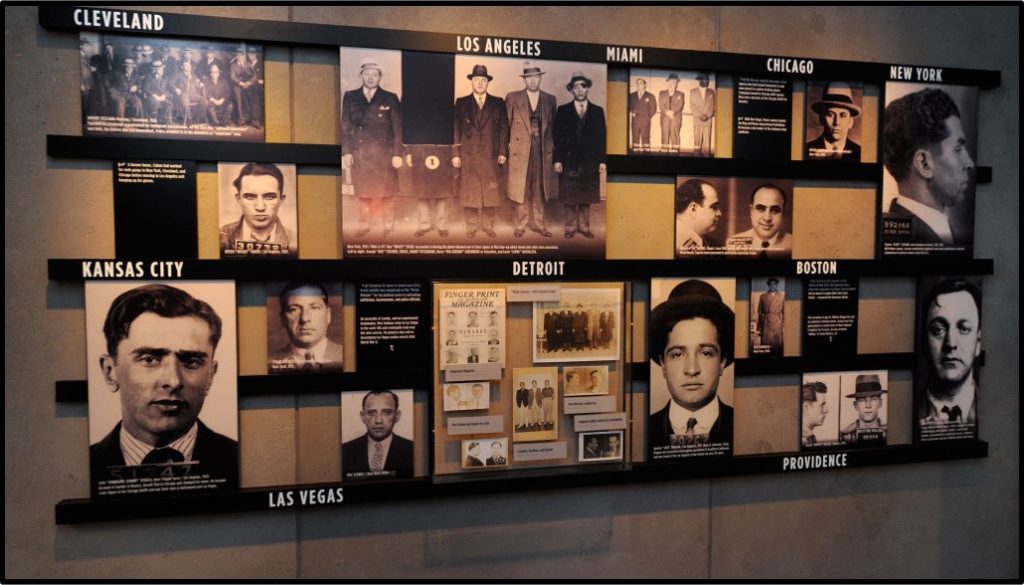
Author’s Note: My recent Las Vegas Mob Museum lecture on Jack Dragna, Benjamin Siegel, Mickey Cohen and early Los Angeles criminal happenings went over well. Look for video snippets of the event on my website, www.jmichaelniotta.com and on social media. Also, check out some of my crime influenced works of art. You can even commission your own work of crime art from the author-artist-musician. And for those of you wanting to see my work in person, I have an upcoming Dysfunctional Disney themed art show in Downtown San Diego on November 20th. Hope to see you there!
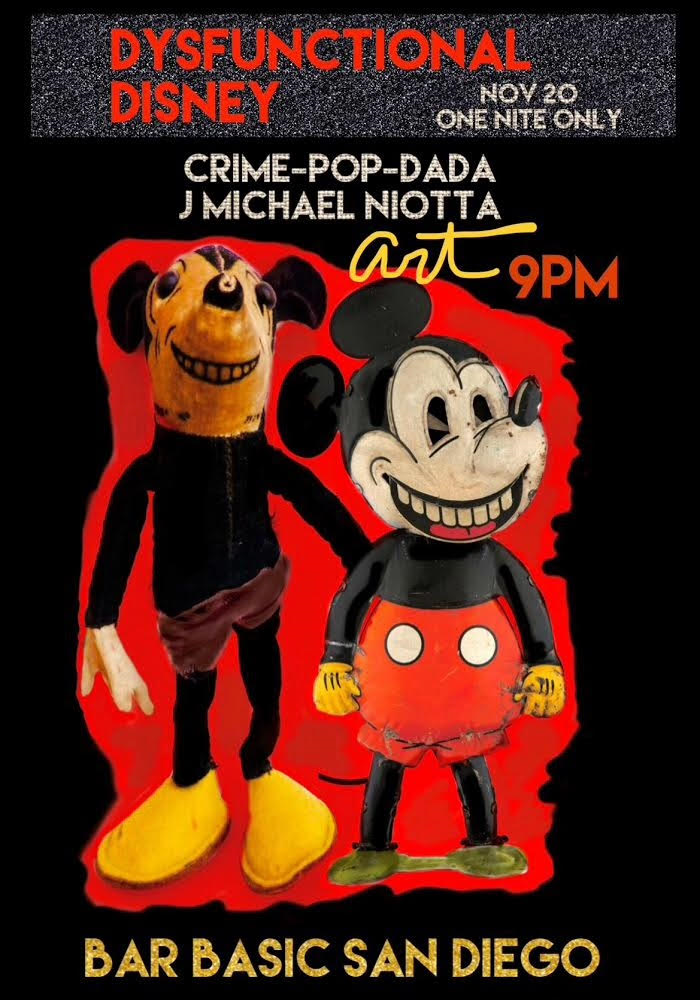
- The Walnut Bust: The Early Days of Los Angeles With Dr J. Michael Niotta - May 21, 2020
- The Cornero Gang & the Infamous Page Brothers: The Early Days of Los Angeles With Dr J. Michael Niotta - June 4, 2019
- The Man From Chicago: The Early Days of Los Angeles With Dr J. Michael Niotta - December 12, 2018
